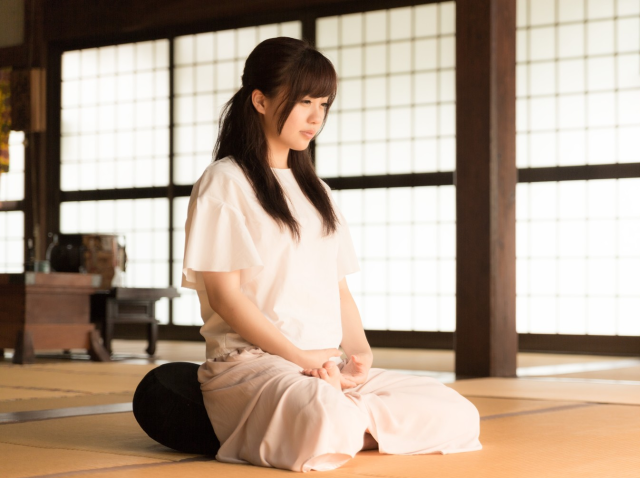
What do you think of when you hear the word Zen? For most people, “organized religion” probably isn’t a phrase that pops up immediately. This can be a bit of a predicament for Zen Buddhist missionaries working in places like Europe and North America.
The word, which comes from a Japanese translation of the Chinese word chán, literally means meditation, and has developed a romantic sense of being purely in the moment and devoid of all thought. This concept has been focused on by various artists in Western culture like Jack Kerouac, with a diminished emphasis on the less sexy doctrines and worshiping of Buddha that are very much a part of the whole religion.
This image dichotomy is something that the Headquarters of Missionary Work for the Soto School of Buddhism in Europe has to deal with all the time.
Excite News Japan recently went to interview them on the state of modern Soto Zen Buddhism abroad. Check our rundown of their findings below!
The Soto Zen Buddhist Association (SOTOZEN) explains that they have around 4,600 members around Europe, with nearly half of them concentrated in France. Second place is tied for approximately by Italy, Germany, and Spain.
They use the term “members” loosely, however, to refer to anyone who shown an interest in and participated in the meditation aspect of the religion. Even so, they have a significant enough presence on the continent to function.
In addition to the well-known meditation, they are also able to offer equally important rituals such as chanting sutras, eating meals in conformity with the dining rules of oryoki, and performing intense 3-day to week-long meditation session referred to as sesshin in the summer.
SOTOZEN explains that their presence in Europe was partly due to getting in at the right time.
“In 1967, a Soto monk named Taisen Deshimaru had set up a Zen dojo in Paris to bring Zen to Europe. At the time the Vietnam war was waging and hippie culture was firmly entrenched. People were quickly losing faith in their current social foundations and were looking for anything new. Along with India’s Hinduism, Zen was another well that they could take pieces from to fit into their ideological puzzle. Zen’s focus on sitting (zazen) and meditating was very accessible for people. You didn’t even need knowledge of Japanese, just a body.”
Although people didn’t need to know Japanese to participate, it seems it would have helped to recognize it as a religion rather than just a philosophy. And yet, ironically, this may have been the cause of its success in the largely secular nation of France.
“As opposed to the faith-based Zen meditation, many people have incorporated Zen meditation as a purely physical act. That could be the reason many people join the Zen meditation in Europe. They want to meditate but cannot worship Buddha, and when they enter the main hall many people refuse to pray.”
For some religions this may be considered a grave insult, but for Soto Zen Buddhism as well as many other branches of the religion, adaptation is the key to survival. SOTOZEN are well aware that what Zen is depends largely on the when and where.
While many critics claim that this is Zen’s biggest weakness, there probably wouldn’t be a European Soto school without the ability to change and respond to the people around it.
Source: Excite News (Japanese)
Top Image: Pakutaso

 Historic Kyoto temple first in Japan to offer gay weddings
Historic Kyoto temple first in Japan to offer gay weddings Cup of noodles for vegans! Japanese Zen Buddhist temple starts selling instant soba and udon
Cup of noodles for vegans! Japanese Zen Buddhist temple starts selling instant soba and udon Japanese foundation tests mobile meditation truck in Osaka city with promising results
Japanese foundation tests mobile meditation truck in Osaka city with promising results Temple camping in Japan at Wakayama’s Daitaiji【Photos】
Temple camping in Japan at Wakayama’s Daitaiji【Photos】 Refresh your mind, body, and soul at Temple Camp Daitaiji, the first temple to open to campers
Refresh your mind, body, and soul at Temple Camp Daitaiji, the first temple to open to campers This is Japan’s, and the world’s, first capsule hotel, and you can still stay there
This is Japan’s, and the world’s, first capsule hotel, and you can still stay there Godzilla leather wallet will make you feel like the King of the Monsters and lord of fashion
Godzilla leather wallet will make you feel like the King of the Monsters and lord of fashion The 5 best Japanese bento to buy at Kyoto Station
The 5 best Japanese bento to buy at Kyoto Station Pokémon Cafe serves up a green tea ceremony in Japan with Poltchageist and Sinistcha matcha menu
Pokémon Cafe serves up a green tea ceremony in Japan with Poltchageist and Sinistcha matcha menu Studio Ghibli unveils new goods that tip the hat to The Cat Returns
Studio Ghibli unveils new goods that tip the hat to The Cat Returns How to make a secret rice bowl at Ichiran ramen
How to make a secret rice bowl at Ichiran ramen Tokyo sweets store sells beautiful soft serve ice creams that look like works of art
Tokyo sweets store sells beautiful soft serve ice creams that look like works of art Shinkansen station platforms now have…Baskin Robbins ice cream vending machines!
Shinkansen station platforms now have…Baskin Robbins ice cream vending machines! Bad tourist manners at Mt Fuji Lawson photo spot prompts Japanese town to block view with screens
Bad tourist manners at Mt Fuji Lawson photo spot prompts Japanese town to block view with screens Chinese dude bags super hot Ukrainian wife, generates major envy online
Chinese dude bags super hot Ukrainian wife, generates major envy online McDonald’s Japan’s new pancake pie is a taste sensation
McDonald’s Japan’s new pancake pie is a taste sensation Foreigner’s request for help in Tokyo makes us sad for the state of society
Foreigner’s request for help in Tokyo makes us sad for the state of society FUK COFFEE?!? Japanese cafe has a perfectly innocent reason for its startling-looking name
FUK COFFEE?!? Japanese cafe has a perfectly innocent reason for its startling-looking name One of Japan’s oldest castles now lets travelers spend night on the grounds, drink in its keep
One of Japan’s oldest castles now lets travelers spend night on the grounds, drink in its keep Two things to do, and two things not to do, when leaving a traditional Japanese inn
Two things to do, and two things not to do, when leaving a traditional Japanese inn Japan has nearly 4 million abandoned homes, but where and why?
Japan has nearly 4 million abandoned homes, but where and why? Studio Ghibli unveils massive T-shirt collection featuring top anime movie characters
Studio Ghibli unveils massive T-shirt collection featuring top anime movie characters McDonald’s new Happy Meals offer up cute and practical Sanrio lifestyle goods
McDonald’s new Happy Meals offer up cute and practical Sanrio lifestyle goods Our Japanese reporter visits Costco in the U.S., finds super American and very Japanese things
Our Japanese reporter visits Costco in the U.S., finds super American and very Japanese things Japanese ramen restaurants under pressure from new yen banknotes
Japanese ramen restaurants under pressure from new yen banknotes All-you-can-drink Starbucks and amazing views part of Tokyo’s new 170 meter-high sky lounge
All-you-can-drink Starbucks and amazing views part of Tokyo’s new 170 meter-high sky lounge More foreign tourists than ever before in history visited Japan last month
More foreign tourists than ever before in history visited Japan last month New definition of “Japanese whiskey” goes into effect to prevent fakes from fooling overseas buyers
New definition of “Japanese whiskey” goes into effect to prevent fakes from fooling overseas buyers Disney princesses get official manga makeovers for Manga Princess Cafe opening in Tokyo
Disney princesses get official manga makeovers for Manga Princess Cafe opening in Tokyo Sales of Japan’s most convenient train ticket/shopping payment cards suspended indefinitely
Sales of Japan’s most convenient train ticket/shopping payment cards suspended indefinitely Sold-out Studio Ghibli desktop humidifiers are back so Totoro can help you through the dry season
Sold-out Studio Ghibli desktop humidifiers are back so Totoro can help you through the dry season Japanese government to make first change to romanization spelling rules since the 1950s
Japanese government to make first change to romanization spelling rules since the 1950s Ghibli founders Toshio Suzuki and Hayao Miyazaki contribute to Japanese whisky Totoro label design
Ghibli founders Toshio Suzuki and Hayao Miyazaki contribute to Japanese whisky Totoro label design Doraemon found buried at sea as scene from 1993 anime becomes real life【Photos】
Doraemon found buried at sea as scene from 1993 anime becomes real life【Photos】 Tokyo’s most famous Starbucks is closed
Tokyo’s most famous Starbucks is closed One Piece characters’ nationalities revealed, but fans have mixed opinions
One Piece characters’ nationalities revealed, but fans have mixed opinions We asked a Uniqlo employee what four things we should buy and their suggestions didn’t disappoint
We asked a Uniqlo employee what four things we should buy and their suggestions didn’t disappoint Buddhist temples in Japan get digital upgrade with new techno wooden fish【Video】
Buddhist temples in Japan get digital upgrade with new techno wooden fish【Video】 Fed up of romance sims? Buddhist-themed visual novel coming to Android and iOS
Fed up of romance sims? Buddhist-themed visual novel coming to Android and iOS New Tokyo meditation studio will teach you to “be in the moment” in relaxing 30-minute sessions
New Tokyo meditation studio will teach you to “be in the moment” in relaxing 30-minute sessions Tera Ango now offers the chance to live and take part in daily practices at a Buddhist temple
Tera Ango now offers the chance to live and take part in daily practices at a Buddhist temple Spending a night in Tokyo’s most beautiful capsule hotel【Photos】
Spending a night in Tokyo’s most beautiful capsule hotel【Photos】 Japan’s Shachi Bus offers tour with no destination or leaving the bus, but something’s fishy…
Japan’s Shachi Bus offers tour with no destination or leaving the bus, but something’s fishy… Giant Buddhist pagoda and Kannon statue in Fukuoka Prefecture look like a theme park
Giant Buddhist pagoda and Kannon statue in Fukuoka Prefecture look like a theme park A cup ramen for Zen Buddhists: New Shindo Ramen Zendo noodles are meat, dairy and egg free
A cup ramen for Zen Buddhists: New Shindo Ramen Zendo noodles are meat, dairy and egg free Afro Buddha, usually only displayed one day a year, gets rare extended viewing until mid-October
Afro Buddha, usually only displayed one day a year, gets rare extended viewing until mid-October Dassai sake matcha truffles bring two esteemed Japanese companies together for limited time
Dassai sake matcha truffles bring two esteemed Japanese companies together for limited time Himeji Castle gets first official Lego set, Zen block garden kit on the way too【Photos】
Himeji Castle gets first official Lego set, Zen block garden kit on the way too【Photos】 Shrine cat takes a nap in a Zen garden【Photos】
Shrine cat takes a nap in a Zen garden【Photos】 Kindergartener brings a surprise guest to school for the best show and tell ever
Kindergartener brings a surprise guest to school for the best show and tell ever Add some wabisabi to your rooms with Japanese rock garden multicovers
Add some wabisabi to your rooms with Japanese rock garden multicovers Beautiful Kinkakuji temple even cooler under blanket of snow
Beautiful Kinkakuji temple even cooler under blanket of snow
Leave a Reply